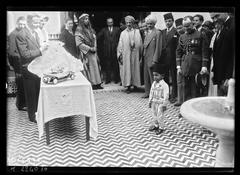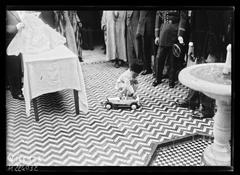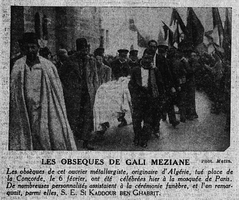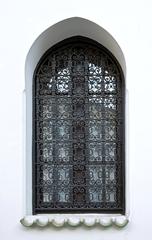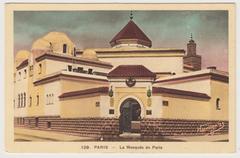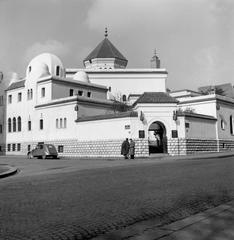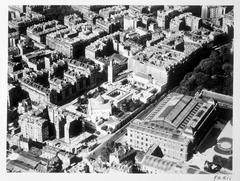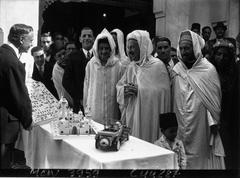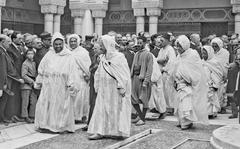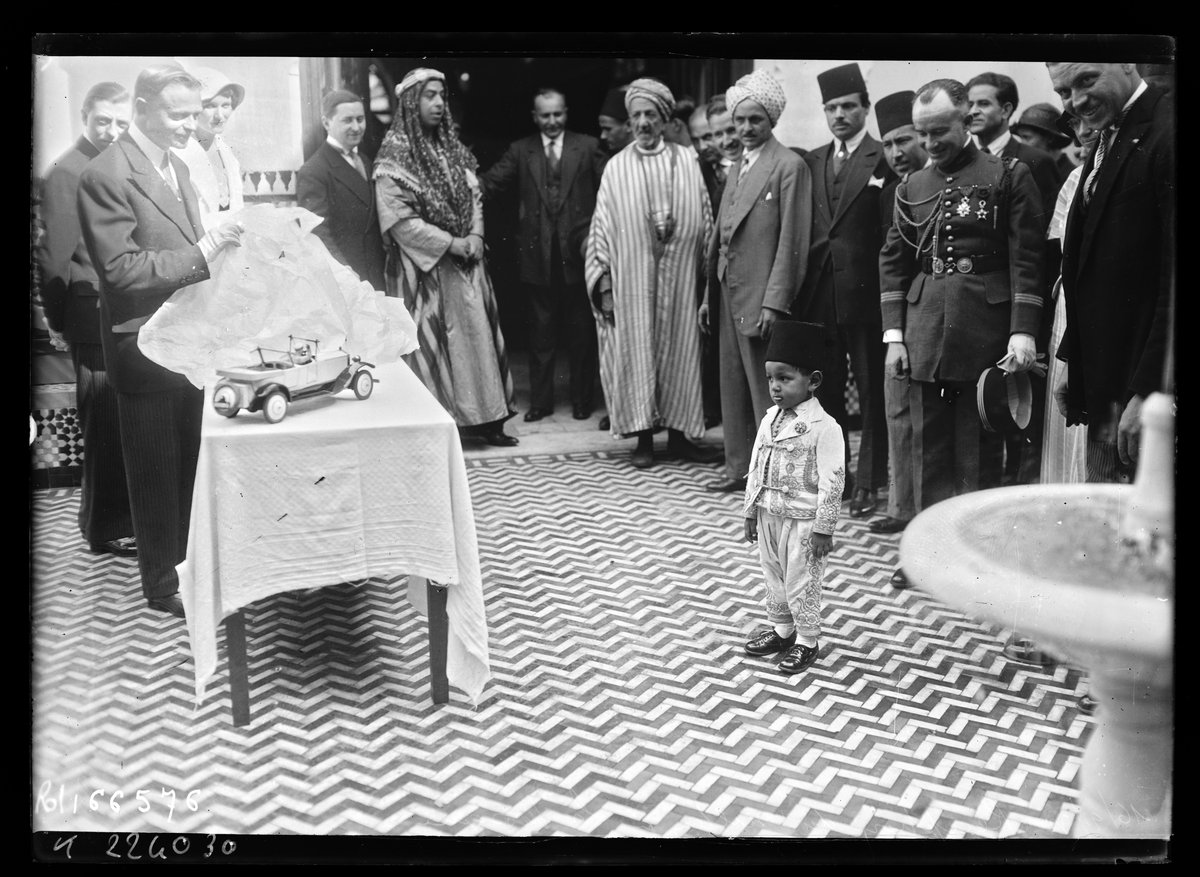
Grand Mosque of Paris: Visiting Hours, Tickets, and Historical Significance
Date: 14/06/2025
Introduction
The Grand Mosque of Paris (Grande Mosquée de Paris) is not only an architectural gem but also a living symbol of France’s complex relationship with Islam and its multicultural heritage. Built as a tribute to Muslim soldiers from French colonies who fought and died for France during World War I, the mosque embodies gratitude, remembrance, and the enduring ties between France and the Muslim world (Paris Digest; Middle East Eye). Its Hispano-Moorish architecture, vibrant gardens, and welcoming atmosphere make it one of the most distinctive landmarks in the French capital.
This comprehensive guide delivers everything you need to know for a meaningful visit: historical background, architectural highlights, cultural significance, practical visitor information, and tips for maximizing your experience at this unique Parisian destination.
Historical Overview
Origins and Early Context
The idea of establishing a mosque in Paris gained traction after World War I, when over 100,000 Muslim soldiers from North Africa and other French colonies died fighting for France (Paris Digest; Malevus). Their sacrifice was particularly notable in battles like Verdun, which saw tens of thousands of Muslim casualties. The mosque was conceived as a gesture of national gratitude and as an acknowledgment of the place of Islam within French society.
Political, Colonial, and Financial Dimensions
The mosque also reflected France’s status as a colonial power and its position as a “Muslim power” due to vast territories in North Africa and the Middle East. The project became a symbol of both colonial integration and diplomatic outreach (Middle East Eye; Malevus).
Construction faced legal obstacles due to the 1905 French law on the separation of church and state. A workaround involved establishing the Society of Habous and Holy Places, registered in Algeria, allowing state funding (Malevus; Middle East Eye). In 1920, Parliament approved the creation of a Muslim Institute in Paris, with significant financial contributions from the government and Muslim colonies (Paris Digest; The Empty Nest Explorers).
Construction and Inauguration
Key figures included Marshal Hubert Lyautey and Si Kaddour Benghabrit, who became the mosque’s first rector and played an essential role in its realization (Malevus; Story of a City). The foundation stone was laid in 1922, and architect Maurice Tranchant de Lunel’s design blended North African and Hispano-Moorish influences, notably drawing inspiration from the Al-Zaytuna Mosque in Tunisia and the el-Qaraouiyyîn Mosque in Morocco (Paris Digest; Two in France).
The mosque officially opened in July 1926, with high-profile guests including President Gaston Doumergue and Sultan Moulay Youssef of Morocco (Paris Digest). It quickly became a center for religious, educational, and cultural activities for Paris’s Muslim residents.
Architectural and Artistic Heritage
Hispano-Moorish Design and Features
The Grand Mosque of Paris is a masterwork of Hispano-Moorish architecture, characterized by horseshoe arches, colorful zelliges (Moroccan mosaics), intricate wood carvings, and lush Andalusian gardens (Solo Sophie; Kawa News; parissecret.com).
- Minaret: The 33-meter minaret, modeled after the Al-Zaytuna Mosque, is a key feature of the Parisian skyline (Wikipedia).
- Patio and Gardens: The central patio and gardens, inspired by the Alhambra and Andalusian traditions, offer marble fountains, palm trees symbolizing the five pillars of Islam, and a tranquil retreat from city life.
- Prayer Hall: The main prayer space features marble floors, gold-threaded detailing, and Persian carpets, with the mihrab (prayer niche) as a focal point.
- Entrance and Calligraphy: The grand cedar wood door, handcrafted by Moroccan artisans, is adorned with Quranic verses in kufic script.
Additional Facilities
The mosque complex also includes a madrassa (religious school), library, conference room, traditional hammam (bathhouse), restaurant, tea room, and a shop for Arab handicrafts (Wikipedia).
Cultural and Religious Significance
Symbol of Remembrance and Coexistence
The mosque stands as a visible testament to the contributions of Muslim soldiers and as a beacon of interfaith cohabitation in Paris. Its minaret was deliberately designed to join the city’s religious skyline, promoting dialogue and tolerance (mosqpedia.org).
Role during World War II
During the Nazi occupation, under the leadership of Si Kaddour Benghabrit, the mosque provided refuge and false Muslim identity papers to Jews and others fleeing persecution (The Empty Nest Explorers; Solo Sophie).
Contemporary Role
Today, the mosque serves as the head mosque for French Muslims, led by Mufti Dalil Boubakeur since 1992. It is authorized to certify halal meat in France and hosts major Islamic festivals, such as Eid al-Fitr and Eid al-Adha, alongside community and cultural events (mosqpedia.org; discoverwalks.com).
Community, Governance, and International Ties
The Grand Mosque of Paris is managed by the Société des Habous et lieux saints de l’Islam and receives significant financial support from Algeria, reflecting strong international and diaspora links (mosqpedia.org). The mosque fosters inclusivity, with facilities for both men and women, though debates around gender equality and religious practices continue.
Practical Information for Visitors
Location and Access
- Address: 2bis Place du Puits de l’Ermite, 75005 Paris, in the Latin Quarter.
- Nearest Metro: Place Monge or Censier-Daubenton (Line 7).
- Bus Lines: Lines 47, 67, and 89.
- Nearby Attractions: Jardin des Plantes, Panthéon, and the Latin Quarter (Dreams in Paris; France Hotel Guide).
Visiting Hours
- Standard Hours: Open daily (except Fridays and major Muslim holidays) from 9:00 am to 6:00 pm; summer hours may extend to 7:00 pm.
- Fridays: Open to visitors after the noon prayer (typically after 2:00 pm) (Travelfranceblog; Happiness on the Way).
- Closures: Check the mosque’s website or call ahead for closures during religious festivals.
Tickets and Admission
- Entry Fee: €3 per person; €2 for groups of 10 or more.
- Payment: Cash or card at the entrance (World of Lina).
- Guided Tours: Free, but usually conducted in French, and subject to availability (France Hotel Guide). Self-guided visits are common; bring a guidebook or translation app if you don’t speak French.
Dress Code and Etiquette
- Modest Clothing: Shoulders and knees must be covered for all visitors. Women must cover their shoulders; scarves are available at the entrance.
- Behavior: Maintain a respectful demeanor, avoid loud conversations, and respect prayer times. Non-Muslims should not enter the prayer hall during prayers.
- Photography: Permitted in most areas, but avoid photographing worshippers and prayer spaces (Travelfranceblog).
Accessibility
- Mobility: Step-free access, ramps, and accessible restrooms are provided (Wikipedia).
- Capacity: Accommodates up to 1,000 people.
Visitor Experience Highlights
The Garden Oasis
Lush gardens, turquoise tiles, and ornate fountains create a peaceful atmosphere. Spring and early summer are ideal for visiting, especially for photography. Early mornings are less crowded (Away with Meredith; France Hotel Guide).
Architectural Features
Admire the Hispano-Moorish arches, detailed mosaics, and the impressive minaret, which is visible across the 5th arrondissement (Travelfranceblog; Wikipedia).
Tea Room and Restaurant
Enjoy Moroccan mint tea and pastries in the shaded tea room or savor North African dishes at the on-site restaurant, with options for various dietary needs (Travelfranceblog; Away with Meredith).
Hammam
The mosque’s hammam (Turkish baths) is open to women and offers traditional wellness treatments. Check current hours and hygiene reviews before visiting (France Hotel Guide).
Events, Community Activities, and Practical Tips
- Events: The mosque hosts lectures, festivals, art exhibitions, and gastronomic events. For up-to-date listings, refer to its official website (Travelfranceblog).
- Tips: Arrive early to avoid crowds, especially during spring. Bring cash for small purchases and respect all posted guidelines. Restoration work is ongoing in some areas but does not detract from the experience (Away with Meredith).
- Health & Safety: Follow current health guidelines, particularly regarding COVID-19, and safeguard belongings as you would elsewhere in Paris (Wikipedia).
Frequently Asked Questions (FAQ)
Q: What are the Grand Mosque of Paris visiting hours?
A: Generally, 9:00 am to 6:00 pm daily (7:00 pm in summer), except Fridays until after the noon prayer and during major Muslim holidays.
Q: How much are tickets?
A: €3 per person, €2 for groups of 10+. Payment by cash or card at the entrance.
Q: Is there a dress code?
A: Modest attire is required—shoulders and knees covered. Women must cover their shoulders; scarves are available.
Q: Are guided tours available in English?
A: Free guided tours are usually in French; self-guided visits are recommended for non-French speakers.
Q: Can I take photos inside?
A: Photography is allowed in most public areas. Avoid taking photos during prayers or in restricted spaces.
Q: Is the mosque accessible to visitors with disabilities?
A: Yes, with ramps and accessible restrooms.
Visuals and Media
For a virtual experience, explore official virtual tours and high-resolution images of the mosque’s minaret, mosaics, and gardens. Use alt text like “Grand Mosque of Paris minaret at sunset” for accessibility.
Conclusion
The Grand Mosque of Paris is an essential stop for anyone interested in Islamic culture, French history, or architectural beauty. By planning ahead—checking opening hours, understanding ticket options, and respecting etiquette—you’ll ensure a smooth and enriching visit. Don’t miss the opportunity to relax in the gardens, sample authentic North African cuisine, and learn about the mosque’s vital role in France’s multicultural story.
For more tips, download the Audiala app and follow us on social media for the latest updates and travel guides.
Summary and Key Visitor Tips
- Historical significance: Memorial to Muslim soldiers of World War I and a center for Islamic culture in France.
- Architectural highlights: Hispano-Moorish design, 33-meter minaret, Andalusian gardens.
- Visiting hours: 9:00 am–6:00 pm (or 7:00 pm in summer), closed Fridays until after noon prayer and during major Islamic holidays.
- Tickets: €3 per person, €2 for groups.
- Dress code: Modest attire required.
- Accessibility: Step-free access, facilities for reduced mobility.
- Nearby attractions: Jardin des Plantes, Panthéon, Latin Quarter.
- Facilities: Tea room, restaurant, hammam, library, gift shop.
- Guided tours: Free, usually in French; self-guided recommended for English speakers.
- Photography: Allowed in most areas; respect worshippers and signage.
For the latest details, consult the mosque’s official page and Mosqpedia overview.
